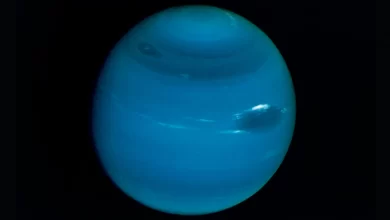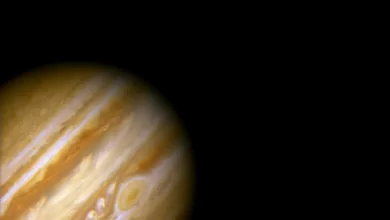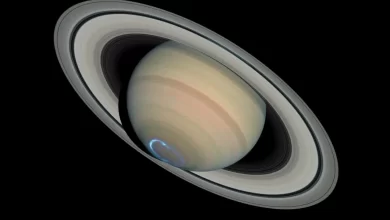Uranus is the seventh planet from the sun and has the Solar System’s third-largest planetary radius and fourth-largest planetary mass. Because of its dimness and slow orbit, it was never recognized as a planet by ancient observers, despite being visible to the naked eye like the five classical planets. It was the first planet discovered in modern times.
- Uranus was discovered by a german-born British astronomer William Herschel in 1781. Its rings were discovered in 1976.
- Uranus was the first planet in the history of mankind that was discovered with the help of a telescope.
- Uranus has two sets of rings. (i) Outer rings: the innermost one is reddish like dusty rings elsewhere in the solar system, and the outer ring is blue like Saturn’s E ring (ii) Inner rings: The inner system of nine rings consists mostly of narrow and dark grey rings.
- Venus and Uranus are the only planets in our solar system that rotate clockwise. This type of rotation is called retrograde rotation.
- Uranus has a total of 27 moons, which are all named after the Alexander Pope and William Shakespeare characters. All the other moons in our solar system are named after Roman and Greek mythology.
- Oberon and Titania are the largest Uranian moons and were first to be discovered in the year 1787.
- Uranus’s moon Miranda is one of the weirdest moons of all. It is weird because it seems to have been blasted apart and then put together again.
- A year on Uranus lasts 84 Earth years (30,687 Earth days). That means it completes a revolution of the sun in 84 earth years.
- Uranus’ axis is at 97 degrees. It is tilted very uniquely, and no other planet in the solar system is tilted at such an angle. For example, Jupiter is tilted by 3 degrees, and the earth is tilted at 23 degrees.
- One day on Uranus is equivalent to 17 hours, 14 minutes of earth. As on all the giant planets in our solar system, its upper atmosphere experiences strong winds in the direction of rotation.
- The diameter of Uranus is 50,724 km. Whereas the diameter of the earth is 12,742 km.
- 63 Earths can fit inside Uranus, and 4 Earths could line up across its diameter.
- The average distance between Uranus and the sun is about 19.19 AU or 2,870,972,200 km. (1 AU= distance of sun from the earth)
- Neptune is overall the coldest planet in our solar system. However, Uranus has the coldest atmosphere than any other planet in the solar system.
- Eighty percent or more of the Uranus mass is made up of a hot dense fluid of “icy” materials water, methane, and ammonia. Whereas the temperature near the core reaches 4,982 degrees Celsius (9,000 degrees Fahrenheit).
- Uranus is the second least planet in the solar system after Saturn.
- Uranus is comprised of water, methane, and ammonia fluids above a small rocky center. Its atmosphere is made of helium and hydrogen-like Jupiter and Saturn, but it also has methane. The methane makes Uranus blue.
- Uranus is blue-green in color; it results as this color because of the absorption of red light by methane gas in Uranus’ deep, cold, and remarkably clear atmosphere.
- High-pressure experiments show large amounts of diamonds are formed from methane on the ice giant planet Uranus.
- The only spacecraft that ever visited Uranus is the Voyager 2 probe. The Voyager 2 probe was launched in the month of August of 1977, and it reached Uranus on January 24, 1986.
- Uranus orbits the sun at a speed of 6.8 Km/s.
- The surface gravity of the planet is slightly weaker as compared to our very own earth. The gravity of Uranus is 8.69 m/s2 or 0.886 g.
References
- Wikipedia-William Herschel
- Solarsystem.nasa.gov
- Sjsu.edu
- Wikipedia-Moons of Uranus
- Wikipedia-Uranus
- Giantworlds.com
- Pds.nasa.gov(Distance between sun and uranus)
- Solarsystem.nasa.gov(Second least dense planet)
- Nasa.gov(why is uranus blue in colour)
- Wikipedoa-Extraterrestrial Diamonds
- Astronomyonline.org(Voyager 2 probe)
- Universetoday.com(orbiting speed of uranus)
- Phys.org(THe surface gravity of uranus)






